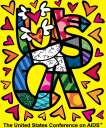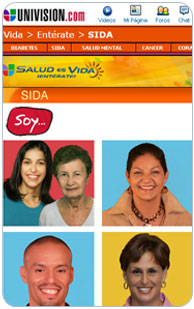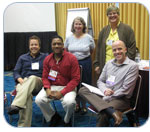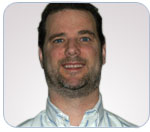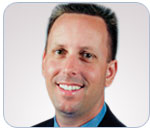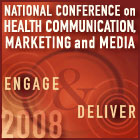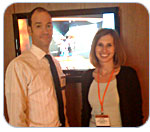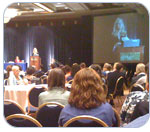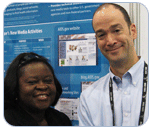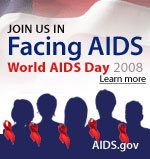Highlights from Health 2.0: User-Generated Healthcare 2008
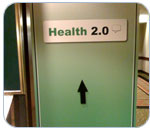
Last week, over 1,000 healthcare and technology industry leaders met in San Francisco for Health 2.0: User-Generated Healthcare 2008  . The conference co-founders, Matthew Holt, author of The Health Care Blog
. The conference co-founders, Matthew Holt, author of The Health Care Blog  , and Indu Subaiya, MD, packed the two-day event with many presenters and panel discussions on “Web 2.0 technologies, healthcare, and all points between.” This post will share just a few of the many highlights from the event which we found particularly relevant to HIV/AIDS service providers.
, and Indu Subaiya, MD, packed the two-day event with many presenters and panel discussions on “Web 2.0 technologies, healthcare, and all points between.” This post will share just a few of the many highlights from the event which we found particularly relevant to HIV/AIDS service providers.
Patients Want to Guide Their Care
Matthew opened the conference by talking about the key features of Health 2.0: “personalized search; community; tools for content delivery; and better integration of data and content,” along with “patients guiding their care.” Throughout the conference there were discussions and demonstrations of tools to help patients manage their health, such as WebMD  , Microsoft’s HealthVault
, Microsoft’s HealthVault  , Google Health
, Google Health  , Aetna
, Aetna  , and Yahoo! Health
, and Yahoo! Health  .
.
Health 2.0 Continues to Grow Domestically and Abroad
A new documentary, The Great American Motorcycle Health 2.0 Tour  , premiered at the conference. For the film, David Kibbe, MD, MBA, and advisor to the Center for Health Information Technology
, premiered at the conference. For the film, David Kibbe, MD, MBA, and advisor to the Center for Health Information Technology  at the American Academy of Family Physicians
at the American Academy of Family Physicians  interviewed experts on the latest Health 2.0 innovations going on around the country. Most of the experts in the film also presented at the conference. They represented sites like American Well
interviewed experts on the latest Health 2.0 innovations going on around the country. Most of the experts in the film also presented at the conference. They represented sites like American Well  , PatientsLikeMe
, PatientsLikeMe  , the NYTimes “Well
, the NYTimes “Well  ” blog, Hello Health
” blog, Hello Health  , CVS Minute Clinic
, CVS Minute Clinic  , Change Healthcare
, Change Healthcare  , MedHelp
, MedHelp  , and Kosmix
, and Kosmix  .
.
Mobile research and applications were among the tools highlighted at the conference. Deb Levine of ISIS  showed us a tool that allows mobile users to text “HIVinfo” to “61827” and receive HIV-prevention information in return. Kevin Noland, CEO of ADAM
showed us a tool that allows mobile users to text “HIVinfo” to “61827” and receive HIV-prevention information in return. Kevin Noland, CEO of ADAM  , showcased an iPhone application that searches health information and uses the phone’s GPS capacity to locate a doctor who can treat particular conditions. Dr. Jay Bernhardt of the Centers for Disease Control and Prevention commented that, of all the new media tools, “mobile has the greatest potential public-health impact -- giving the ability to reach across all groups.”
, showcased an iPhone application that searches health information and uses the phone’s GPS capacity to locate a doctor who can treat particular conditions. Dr. Jay Bernhardt of the Centers for Disease Control and Prevention commented that, of all the new media tools, “mobile has the greatest potential public-health impact -- giving the ability to reach across all groups.”
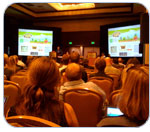
“Gaming in Health Care” Session at Health 2.0
Meeting the Needs of Patients and Providers
Conference speakers also gave important reminders and advice. Doug Solomon of IDEO  focused on the need to understand end users: “We can’t do it from the office with the door closed, looking at a computer--we need to be a part of their lives.” James Matthews of Sage Software
focused on the need to understand end users: “We can’t do it from the office with the door closed, looking at a computer--we need to be a part of their lives.” James Matthews of Sage Software  emphasized the importance of starting with “the passion to deliver healthcare and then find the right technology.” Bill Crounse, from Microsoft
emphasized the importance of starting with “the passion to deliver healthcare and then find the right technology.” Bill Crounse, from Microsoft  , discussed the need to find a way to reimburse providers for delivering information to patients “how, when, and where people need it.”
, discussed the need to find a way to reimburse providers for delivering information to patients “how, when, and where people need it.”
Looking Ahead
The growing number of new media tools and Health 2.0 initiatives offer endless possibilities for linking and engaging people with HIV/AIDS prevention, testing, treatment, and support information. But first, we need to learn what our users want (and continue to check in with them along the way). And we need to continue to share our “lessons learned” with each other. As Robert Kolodner from the Office of the National Coordinator for Health Information Technology stated in the closing session: “We have the tools and are beginning to learn how to use them, but we need to continue to have a ‘network of networks’ where knowledge is shared.”
At AIDS.gov we are working to create a “network of networks” by developing an HIV/AIDS Awareness Day Cross-Promotion Group that consists of government and community partners. We use this group to share information, tools, and the new media lessons we have learned. As Michael Ruppal from The AIDS Institute  (which coordinates National HIV/AIDS and Aging Awareness Day
(which coordinates National HIV/AIDS and Aging Awareness Day  ) told us: “The AIDS Institute is proud to be part of a national network that is committed to promoting comprehensive HIV/AIDS awareness. Since HIV/AIDS impacts so many lives on a daily basis--not just one or two days a year--it is important that we have promotional events, activities, announcements, and educational materials that keep these highly complex health issues at the forefront of everyone’s agenda throughout the year.”
) told us: “The AIDS Institute is proud to be part of a national network that is committed to promoting comprehensive HIV/AIDS awareness. Since HIV/AIDS impacts so many lives on a daily basis--not just one or two days a year--it is important that we have promotional events, activities, announcements, and educational materials that keep these highly complex health issues at the forefront of everyone’s agenda throughout the year.”
Michael continued by saying, “This network has helped educate the community and media and is a trusted source of information about the impact of HIV/AIDS on the populations that are most affected. The AIDS Institute will continue to use our resources to work closely with the network partners to promote and educate everyone, until there is no more need for us to do so.”
Want to Learn More about Health 2.0?
Intrigued by the examples and tools we’ve listed here? Check out the Health 2.0 Blog  , Icyou Health 2.0 video channel
, Icyou Health 2.0 video channel  and the Health 2.0 Facebook group
and the Health 2.0 Facebook group  to learn more and continue the dialogue. And save the date for the next Health 2.0 Conference on April 22-23rd, 2009 in Boston!
to learn more and continue the dialogue. And save the date for the next Health 2.0 Conference on April 22-23rd, 2009 in Boston!
Did you attend Health 2.0? If so, how do you plan to apply what you learned at the conference to your work?

